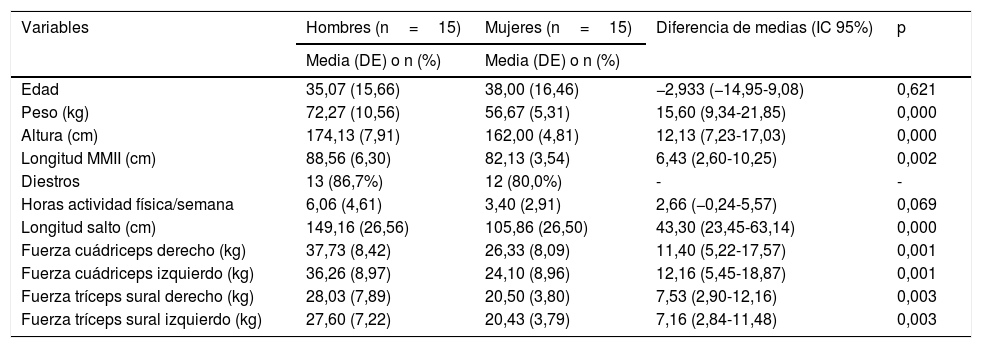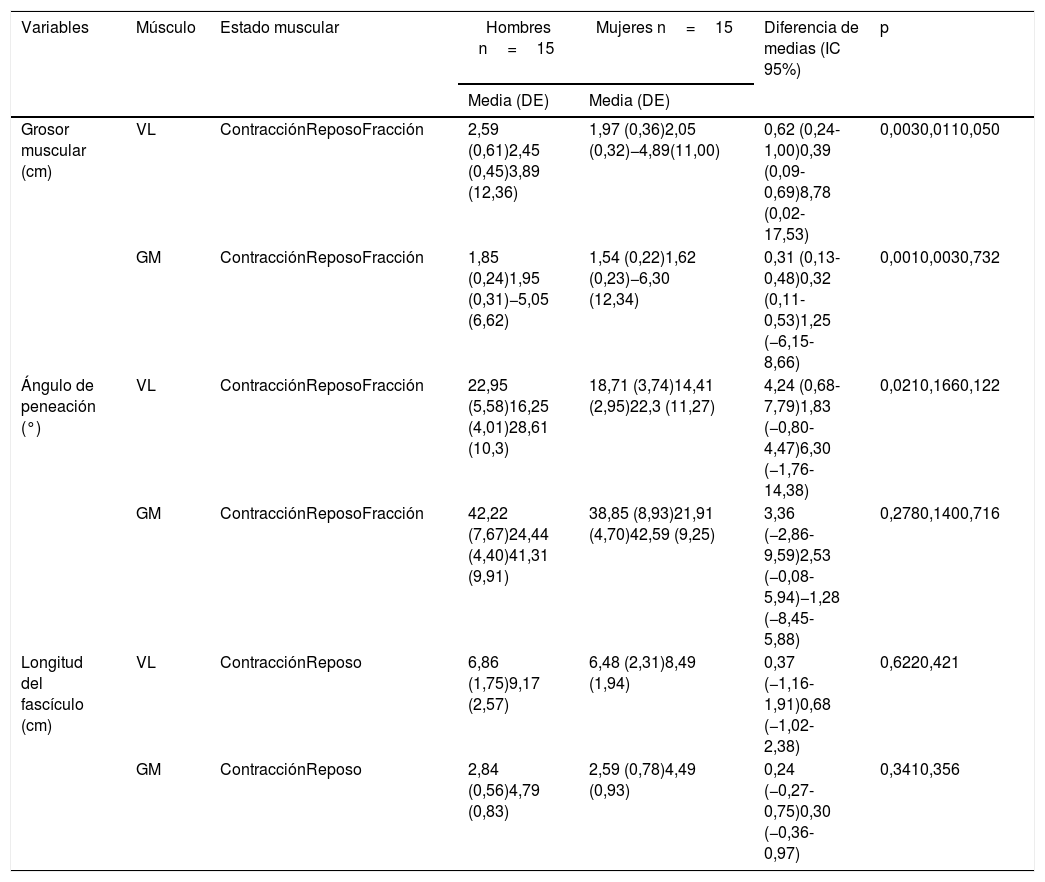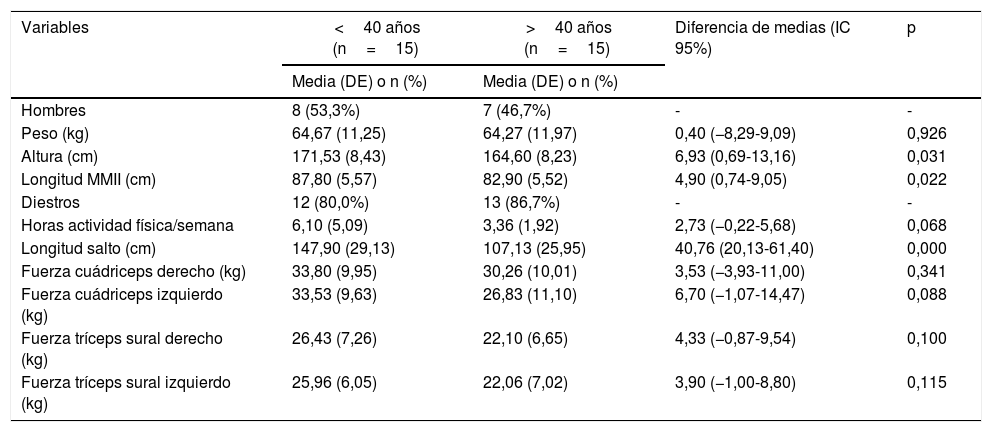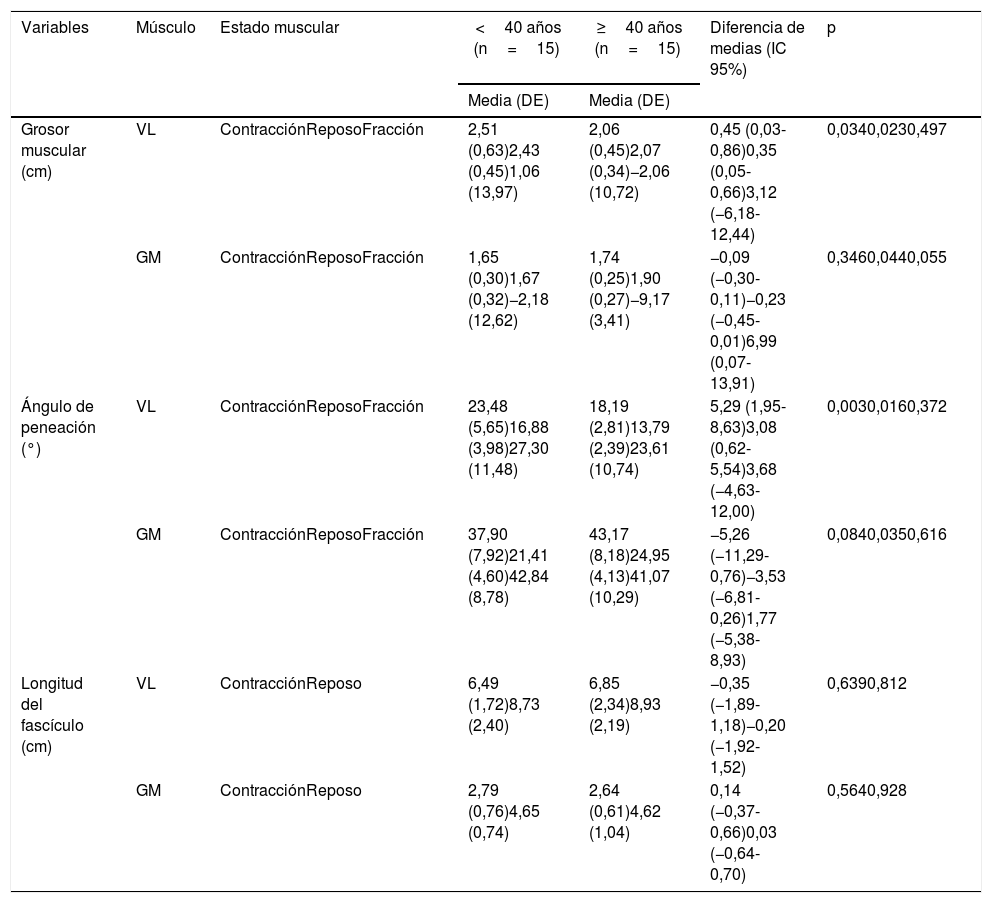La arquitectura muscular varía considerablemente de unas personas a otras, ya que se ve condicionada por diferentes causas como el sexo, la edad, la actividad física, etc. El objetivo general de este estudio es describir y comparar las características de la arquitectura muscular del gemelo medial y el vasto lateral del cuádriceps en una muestra de sujetos clasificados por sexo y edad.
Material y métodosEs un estudio observacional, analítico y transversal. Se seleccionaron un total de 30 sujetos sanos; 15 personas menores de 40 años y otras 15 personas mayores de 40 años. A su vez, se dividió en hombres y mujeres, representando el 50% en cada uno de los grupos. Realizaron una única sesión para cumplimentar una hoja de registro y registrar las imágenes ecográficas y las mediciones de fuerza y longitud de salto horizontal.
ResultadosEl grosor muscular es la variable que muestra más diferencias significativas, tanto entre hombres y mujeres como entre edades, con una media de 2,59cm de grosor del vasto externo durante la contracción en hombres, frente a 1,97cm en las mujeres. Además, se correlaciona con las 3 variables funcionales analizadas: fuerza muscular, longitud de salto y actividad física semanal.
ConclusionesLa fuerza de ambos músculos estudiados se encuentra relacionada con su grosor muscular. La variable arquitectónica que más se modifica según el sexo es el grosor muscular, y según la edad, el ángulo de peneación. La fiabilidad del estudio es excelente, lo que permite una buena reproducibilidad.
Muscle architecture varies considerably from one person to another, because it is conditioned by different causes such as gender, age, muscular function, physical activity, etc. In addition, architectural variables are related to muscle strength. The aim of this study is to describe and compare characteristics of muscular architecture of medial gastrocnemius and vastus lateralis of quadriceps in a sample of participants classified by gender and age.
Material and methodsThis is an observational, analytical, and cross-sectional study. A total of 30 healthy subjects were recruited, consisting of 15 people under 40 and another 15 people over 40 years. They were divided into men and women, representing 50% in each of the groups. They attended a single session to complete a fact sheet and carry out ultrasound images, muscle strength and horizontal jump length measurements.
ResultsMuscular thickness is the variable that shows the most significant differences, both between men and women and between ages, with an average of 2.59cm for men during contraction of the vastus lateralis and 1.97cm for women. It also correlates with the 3 physical variables analysed: muscle strength, jump length and weekly physical activity.
ConclusionsStrength of 2 muscles studied is related to their muscular thickness. The most modified architectural variable according to sex is muscular thickness, and the pennation angle when we compare according to age. The reliability of the study is excellent, and therefore it allows for good reproducibility.
Artículo
Si ya tiene sus datos de acceso, clique aquí.
Si olvidó su clave de acceso puede recuperarla clicando aquí y seleccionando la opción "He olvidado mi contraseña".Comprando el artículo el PDF del mismo podrá ser descargado
Precio 19,34 €
Comprar ahora














